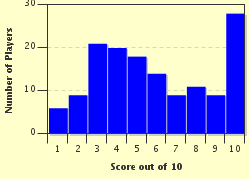Quiz Answer Key and Fun Facts
1. Our first flag features the city's coat of arms on a plain blue background. Founded in 1000 and national capital since 1300, it has been known as Christiania and Kristiania but reverted to its original name in 1925. Which European capital city are we visiting?
2. Our next flag comes from one of the four capital cities standing on the River Danube. The 3-towered castle in the coat of arms represents the Royal Palace, a UNESCO World Heritage Site, which has dominated the city's skyline since 1265. Which city are we visiting?
3. Our next flag belongs to the capital of a former Soviet state. The most spectacular site in the city is the Freedom Monument, a 138-foot high tower unveiled in 1935 to honour soldiers killed during the 1918-20 War of Independence. Which city are we visiting?
4. Our next flag flies over the capital of a European island nation. What is this city that is located on the southern shore of the Faxafloi Bay?
5. Our next flag began as the flag for only part of the city. What is this city that stands on the banks of River Spree?
6. Standing on a river of the same name and located on a trade route between the northern Adriatic Sea and the Danube region, this city was the historical capital of the region of Carniola, part of the Austro-Hungarian Empire. To which capital city does this spectacular flag belong?
7. Founded as a Viking settlement at the end of the 10th Century, this city became a national capital only in 1922. This flag flies over which city?
8. Soccer fans might recognize this flag, as the city's very successful team use it as their captain's armband. Although not the seat of government, this city is mandated as the national capital by the country's constitution. Which city is this?
9. With an average elevation of 400 feet above sea level, this capital city lies on the banks of the Sava river on the southern slopes of the Medvednica mountains. Which city is this, that dates back to a Roman settlement named Andautonia?
10. Although this city rarely sees snow, its skyline is often pictured with the white-capped 5,292-foot high Mount Dajt in the background. In the other direction, the coast can be seen some 20 miles away in the distance. The city is located on the same parallel as New York City. Which city is this?
Source: Author
EnglishJedi
This quiz was reviewed by FunTrivia editor
trident before going online.
Any errors found in FunTrivia content are routinely corrected through our feedback system.

